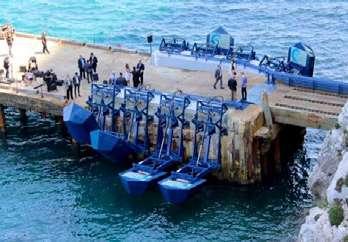|
S |T |O |R |A |G |E|
US Researchers Develop Hydrogen Energy Storage Evaluation Tool
R
esearchers at Pacific Northwest National Laboratory (PNNL) have developed a valuation tool that analyzes different energy storage technologies as part of an integrated and increasingly decarbonized energy system. Hydrogen energy storage is the latest addition to the modelling suite, and it brings a unique capability to the tool. The Energy Storage Evaluation Tool (ESET) is a suite of modules and applications that utilities, regulators, vendors, and researchers can use to model, optimize, and evaluate various energy storage systems: hydrogen, pumped storage hydropower, microgrids, batteries, and thermal mass stored in buildings. The tool examines a broad range of use cases and grid applications to maximize energy storage system benefits from stacked value streams—multiple uses at the same time. Hydrogen energy storage starts with an electrolyzer, a unit that uses electricity to split water into hydrogen and oxygen.
The hydrogen can be used as an alternative to carbon-intensive fossil fuels, feedstock in chemical and processing industries, and heat and power generation through a gas network or on-site fuel cell. The new ESET module for hydrogen, called HESET, can model these different pathways and calculate economic benefits from revenue and cost savings. The tool can stack different revenue streams to show their cumulative effect, including grid services (such as frequency regulation, capacity value, deferral of transmission or distribution equipment upgrades, demand charge reductions, and demand response) along with demands for hydrogen (such as in industrial, blending, and fueling applications). “Other energy storage evaluation tools are out there. This tool is unique in that it allows for modeling of stacked revenue streams, like grid services and several different hydrogen end uses,” said Di Wu, chief research engineer in PNNL’s
Controls and Optimization group. PNNL used HESET to evaluate the economic performance of a hydrogen energy storage system with a 1–10 MW electrolyzer, different system configurations, hydrogen pathways, and grid services. The team found that the hydrogen energy storage project can be financially viable, yielding up to 1.5 times return on investment when the system is properly sized and optimally dispatched to maximize stacked value streams. “Economic benefits from bundling grid services can make a hydrogen energy storage project more cost-effective,” said Wu. “Value streams must be identified and appropriately monetized to make hydrogen storage a more financially competitive option and thereby adopted at scale.” Simulation results using HESET show the costs, benefits, and net benefits (return on investment) from one year using hydrogen energy storage for multiple use pathways and grid services.
JULY 20 21
SAUR ENERGY INTERNATIONAL
S AUR E N E R GY. C O M
41









